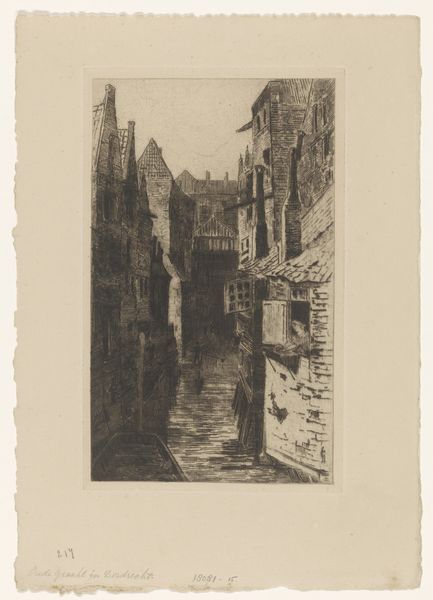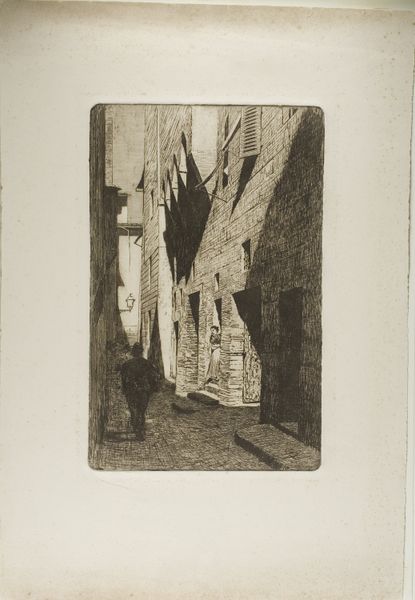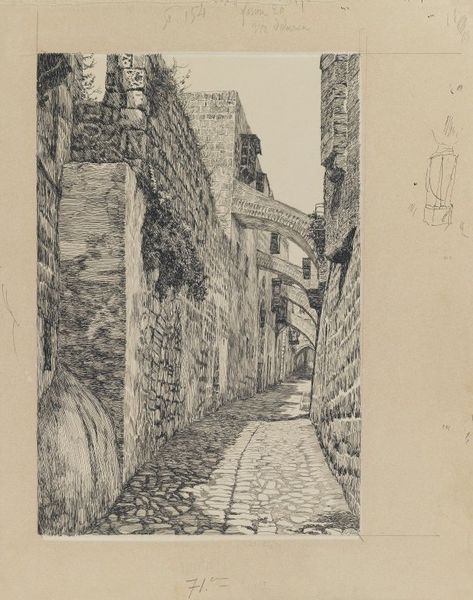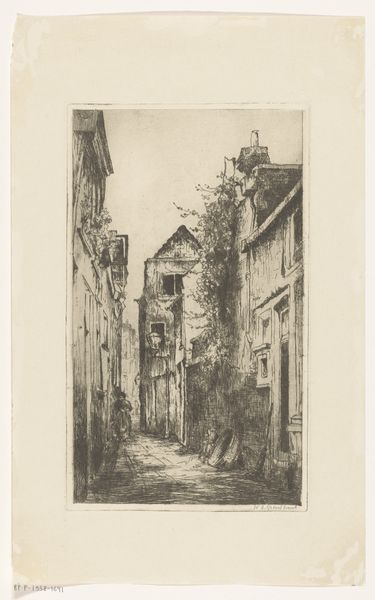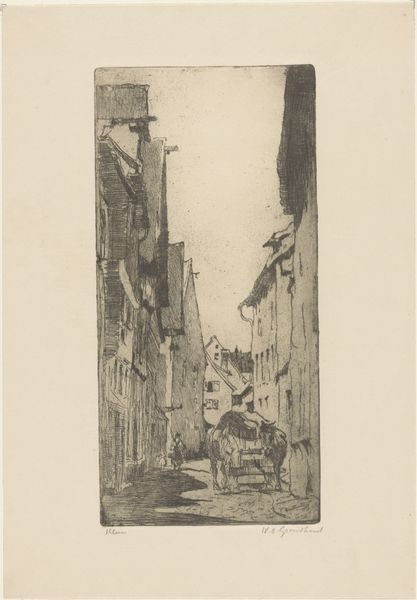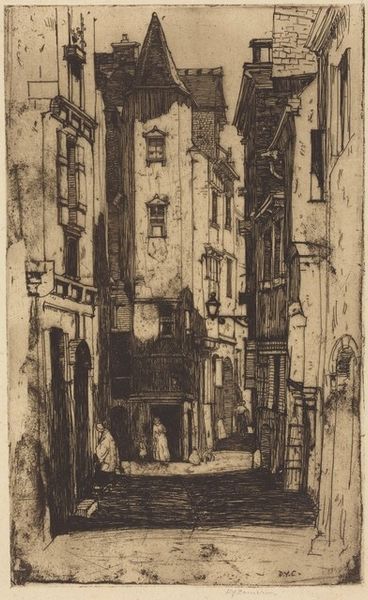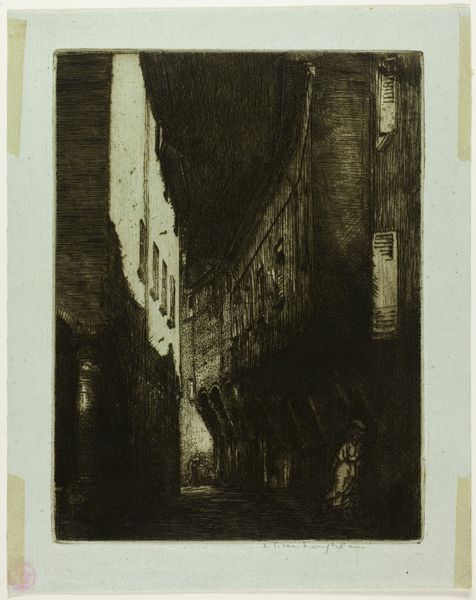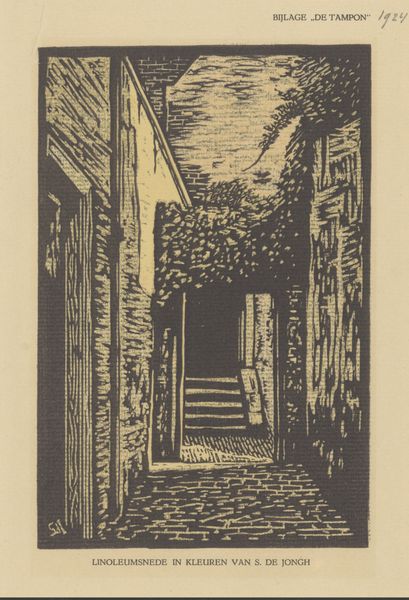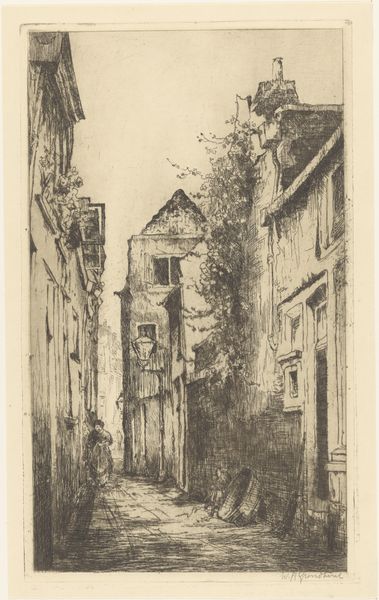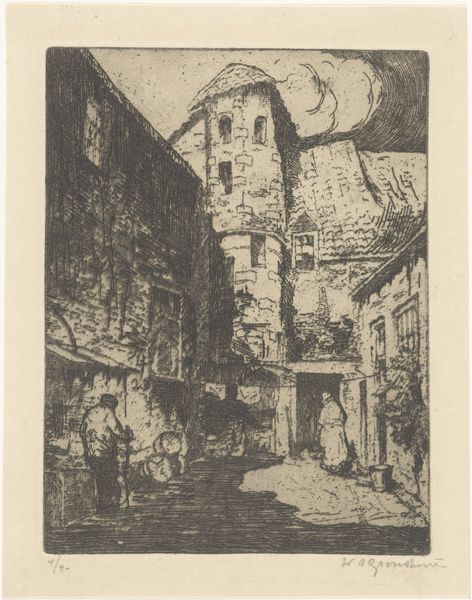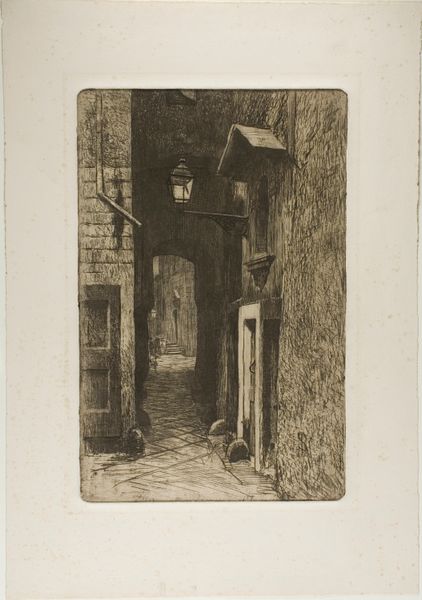![House of Dante da Castiglione [Casa di Dante da Castiglione] by Telemaco Signorini](/_next/image?url=https%3A%2F%2Fd2w8kbdekdi1gv.cloudfront.net%2FeyJidWNrZXQiOiAiYXJ0ZXJhLWltYWdlcy1idWNrZXQiLCAia2V5IjogImFydHdvcmtzLzIwZjNjMjI0LThhMTAtNDQzZS05YmJhLTMzNDkwN2QzZDVkMS8yMGYzYzIyNC04YTEwLTQ0M2UtOWJiYS0zMzQ5MDdkM2Q1ZDFfZnVsbC5qcGciLCAiZWRpdHMiOiB7InJlc2l6ZSI6IHsid2lkdGgiOiAxOTIwLCAiaGVpZ2h0IjogMTkyMCwgImZpdCI6ICJpbnNpZGUifX19&w=3840&q=75)
House of Dante da Castiglione [Casa di Dante da Castiglione] c. 1883
0:00
0:00
print, etching
# print
#
etching
#
landscape
#
cityscape
#
italian-renaissance
#
realism
Dimensions: plate: 25.5 × 16 cm (10 1/16 × 6 5/16 in.) sheet: 48.5 × 30.7 cm (19 1/8 × 12 1/16 in.)
Copyright: National Gallery of Art: CC0 1.0
Editor: This etching, "House of Dante da Castiglione" by Telemaco Signorini, created around 1883, depicts a rather gloomy street scene. I'm struck by the sharp contrast between the dark shadows and the small slivers of light. It makes me wonder about the artist's intention in portraying the city in this way. What do you see in this piece, from a formalist perspective? Curator: The power of this work lies, undeniably, in its structural composition. Observe how Signorini manipulates line and shadow to create depth and perspective. The density of the etching lines varies greatly, constructing a hierarchy that draws the eye into the scene, the interplay between the architectural elements—the jutting eaves, the placement of the figures. Semiotically, one might argue the shadow serves to cloak and obfuscate. Editor: So the varying darkness contributes significantly? Curator: Precisely. Note the texture achieved through the etching technique. Signorini masterfully uses this to differentiate surfaces, from the rough stonework to the smoother plastered areas. It's through these contrasts that we begin to "read" the built environment and understand its weight and form. Further, consider the very restricted tonal range – the near-absence of pure white or solid black forces us to analyze the subtle gradations that define the space. Does that suggest anything? Editor: Perhaps a somber or introspective mood is emphasized, drawing more attention to the stark geometry? I hadn't considered that before. Curator: Precisely. And from this exercise in semiotic deconstruction, consider how Signorini presents an urban setting not simply as a backdrop, but as a participant in shaping mood and directing the viewer’s gaze. Editor: I see what you mean now. Focusing on the composition really enhances my understanding of how the piece evokes certain feelings and portrays particular depth. Thanks!
Comments
No comments
Be the first to comment and join the conversation on the ultimate creative platform.
